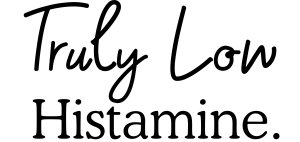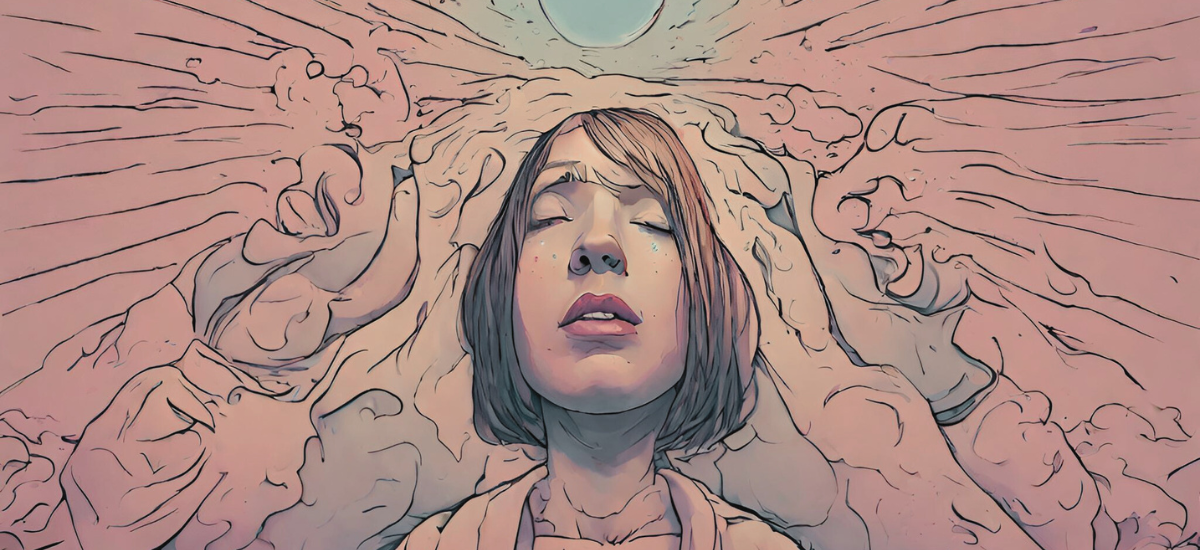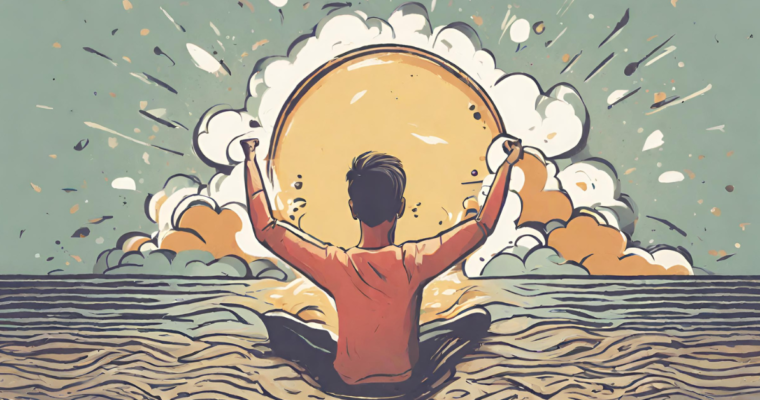In my 20s, migraines made their debut, followed by the flashy ocular migraines in my 30s, starting during my first pregnancy. But it was in my 40s that I developed a range of debilitating and confusing symptoms that turned my life upside down. Vestibular Migraine had entered the room.
Wrong Diagnosis * Unnecessary Prescriptions * Shoulder shrugs
from various doctors left me in a state of despair. It was a dark period filled with hopelessness, until I carved a path to relief that started with desperate Google searches looking for any help and answers. It took 2 years of relentlessly looking for answers, finding the right doctors, and making major lifestyle changes, but I can now say I found a vestibular migraine treatment plan that works for me and feel like I have my life back.
Sharing my journey and my vestibular migraine success with you is outside my comfort zone. As someone who is a fairly private person, this isn’t easy, but I know it’s necessary. It was the candidness of others, their raw and open stories about their struggles, that helped lift me out of the vestibular migraine pit I was stuck in. If my experience can offer similar support to even one person, then I’m here for it.
MY VESTIBULAR MIGRAINE JOURNEY
The Abrupt Beginning of My Vestibular Migraines
My bizarre array of symptoms began abruptly in my 40s following a procedure to remove skin cancer from the side of my face, close to my ear. These included intense dizziness, balance issues, brain fog, lightheadedness, heart palpitations, a sensation of fullness in my ear, vision disruption in my left eye, and heightened anxiety (to name a few).
Desperate for answers, I booked appointments with every specialist I could think of—an ENT, a cardiologist, an allergist, a neurologist, and my family doctor. I even ended up in urgent care at one point. But no one had a real answer. Some gave me the wrong diagnosis and prescribed medications that did nothing to help.
At one point, I was diagnosed with Meniere’s disease, but deep down, I knew it wasn’t right. It didn’t explain all my symptoms, and when I brought up the others, I was told they were just “coincidence” and could be “dealt with later.” But that didn’t sit right with me. My symptoms had all appeared at once, like a switch had been flipped, yet no doctor seemed to consider that they might be connected. I was certain they were—but getting anyone to listen was a different story.
I would find out later that the surgery to remove the skin cancer inadvertently disturbed my left vestibular system, plunging me into immediate and disorienting dizziness. This disruption, coupled with my existing history of migraines and possibly being perimenopausal (*blush* did I just say that on the internet), set the stage for the onset of vestibular migraine.
The Road to Diagnosis: Finding Answers, Treatment, and Relief

So, I took things into my own hands and started researching on the internet trying to figure out what was happening to me. Based on my research, I was fairly certain I was having a vestibular issue. It was during this research that I found my first breakthrough: The Dizzy Cook. She is a great resource for people living with vestibular migraine and having to follow a “migraine diet”. Through her site I began to understand how to treat vestibular migraine.
Because one of the main triggers for my vestibular migraine seemed to be food (specifically Histamine I would soon discover), this site was a goldmine of recipes that finally put me on the right path. Migraine diets eliminate high histamine foods. So, following this diet did put me on the right path. From there I was able to pinpoint that histamine in my food was a key trigger causing the issue.
Through The Dizzy Cook, I stumbled upon an interview she did with an ENT doctor in LA. He mentioned that he often referred his dizzy patients to The Dizzy and Vertigo Institute of Los Angeles. Bingo!
I didn’t waste a second—I reached out to The Dizzy and Vertigo Institute of Los Angeles and scheduled a consultation. And let me tell you, that first call with Dr. Pearce was like being pulled onto a lifeboat. She didn’t bat an eye at my laundry list of symptoms; in fact, she made sense of them and had a pretty good idea of what was going on. Relief washed over me.
Dr. Pearce crafted a vestibular therapy plan, suggested some supplements, offered some lifestyle tweaks, and confirmed what I had been reading, that a low histamine diet would help greatly. And you know what? I followed her advice to the letter. The result? Over time my symptoms dramatically reduced and now I can manage my symptoms to an “almost unnoticeable” level, as long as I stick to the plan.
MY SYMPTOMS: A DETAILED DESCRIPTION

I put together a list of vestibular migraine symptoms I collected from scouring the internet via reputable sources. But I really wanted to share with you MY SYMPTOMS, and what they felt like IN MY OWN WORDS, hoping that doing so might resonate with someone out there searching for answers to similar experiences. My symptoms were a tangle of both vestibular migraine symptoms and histamine intolerance symptoms. These descriptions below are not the medical definitions, just how I describe my experience.
I have also included some of my Histamine Intolerance Symptoms that I think are relevant.
Dizziness
I had dizziness, 24 hours a day. 7 days a week. Week, after week, after week. Every morning I would wake up hoping it was gone and was crushed when I moved and realized it was still there. Some days it was better and some days it was awful. The feeling was like a woozy, unstable feeling. If you like to partake in drinking spirits, I like to relate it to the feeling of “being tipsy”.
Lightheadedness
With the dizziness came the lightheadedness. Ever get up quickly from lying down and have that “woah” moment? That’s what this felt like, all the time.
Balance Issues
I constantly felt like I was walking on a slope. If I closed my eyes and stood on one foot, I would fall over to my left. In addition to that, it also felt like I was walking on a rocking boat. Ever walk down the center of a canoe. Same feeling I had.
Brain Fog
I had a hard time recalling things. Names of things in particular. The information was there, I just was in a grey soup that I had a hard time finding and pulling things out of.
Migraine
All the symptoms of a classic migraine that seemed to spike on the first 2 days of my period. Intense pain on one side of my head, light sensitivity, and nausea.
Blurry Vision
My blurry vision was in my left eye. Which, I would soon discover, is the same side I had my vestibular disturbance on. But basically, it was like I had gunk in my eye and was trying to look through it. I even went to the eye doctor multiple times to get an eye test, which by the way, always came back with no issues.
Unreasonable Anxiety
I call this unreasonable anxiety because I would have no worries or stress, but my anxiety would spike for unreasonable reasons. For example, if something fell and startled me, my body would spiral into a state of anxiety that I had a hard time getting control of.
Ear Fullness & Crackling
My ears constantly felt full, like when they get clogged from flying. They also would crackle, which was a sensation I have NEVER felt.
Derealization
This is the symptom I was most scared of, most embarrassed of, and the one I told no one about because I thought I was going crazy. It felt like I was seeing people through Plexiglas. Like they weren’t fully clear and tangible. Like our two realities were slightly disconnected. This was the absolute worst when I walked through grocery stores. I absolutely HATED going to grocery stores, Costco, and Target because it would take me hours after I left those stores to “get right” again.
THE REMAINING SYMPTOMS ARE ALL HISTAMINE INTOLERANCE SYMPTOMS
Heart Palpitations
This felt like something fluttering right in the middle of my chest. The sensation was not “on my heart” but rather right in the middle of my chest. It always got worse when I laid down. This is a symptom I have had for years, just never knew what caused it. I would eventually discover this was a histamine intolerance symptom, and for me, majorly triggered by natural flavors.
Flushing
My face would flush red, usually after I ate, like I was blushing. Similar to what happens to some people after they drink wine.
Throat Clearing
A constant post nasal drip caused persistent throat clearing. So much so that I was misdiagnosed with GERD (silent reflux) and put on medicine. I spent thousands of dollars on a bed frame that could incline and even had a doctor try to schedule a surgery to “fix my broken valve”. Turns out once I adopted a low histamine diet IT COMPLETELY WENT AWAY!!! This is the symptom that made me realize I have had histamine intolerance for years. It wasn’t until it started triggering vestibular migraine that I discovered my histamine intolerance.
Fatigue
My muscles and body were tired. ALL THE TIME. I had to take a nap every day to deal with the fatigue.
Sinus Pain
Stabbing pain in my sinus cavity, mostly between my eyebrows that would come and go.
VESTIBULAR MIGRAINE TREATEMENTS THAT WORKED FOR ME
The Doctors Who Finally Helped
NEUROLOGIST: This is the first doctor I saw that was able to A) eliminate the scariest possibility, brain tumor B) Validate that what I was going through was more common than you realize, and C) Suggest the next steps that would start testing my vestibular system (a VNG test). He didn’t try and give me answers, he just set me on the path to find those answers.
DIZZY DOCTOR: Ok so this is not actually the medical name but it’s what I call her. Dr. Pearce at The Dizzy and Vertigo Institute of Los Angeles honestly helped give me my life back. I can not say enough amazing things about her and her practice. I walked into her office feeling HOPELESS and left crying tears of happiness because I knew I just took my first step to recovery.
Dr. Pearce listened to all my symptoms, and I mean ALL OF THEM, and didn’t bat an eye or act like I was crazy. Believed me when I said my symptoms started after I had surgery next to my ear to remove cancer. Ran tests that uncovered the issue and put together a plan that she was confident would lead me to recovery. I am not ashamed to say I cried in her office when she said she knew what was wrong and how to fix it. The gift of hope is powerful.
CHIROPRACTOR: I have gone to my Chiropractor for years to help manage my migraines. But once I was diagnosed with a vestibular issue, my chiropractor was able to incorporate a few more adjustments that helped.
Therapies That Made an Impact
VESTIBULAR THERAPY: Part of my recovery plan that Dr. Pearce at The Dizzy & Vertigo Center of Los Angeles created included vestibular therapy. The in-office vestibular rehab therapy was awesome and so interesting. In addition, there were exercises I had to do at home every day such as balance training and gaze stabilization.
Lifestyle Changes That Transformed My Health
These lifestyle changes are ESSENTIAL to my vestibular migraine treatment plan, allowing me to live with little to no symptoms every day.

FOOD: Food Matters. I started by following a migraine diet, and it made a noticeable difference. The Dizzy Cook (thedizzycook.com) has a ton of great recipes based on the Heal Your Headache (HYH) diet, which helped me get started. Things improved, but something still wasn’t quite right.
Then, one weekend, I had a terrible flare-up. I retraced my steps, reviewing everything I had eaten. That’s when I realized—I had been eating bananas and peanut butter all weekend, thinking they were safe! But NOPE—bananas are high in histamine!
That discovery led me down a research rabbit hole. I spoke with my doctor and learned that histamine intolerance is a major trigger for vestibular migraine. While the HYH diet is helpful, it isn’t restrictive enough if histamine is part of the problem. A low-histamine diet avoids high-histamine foods and histamine liberators, and for me… that was the missing piece.
WATER: It doesn’t matter how well I follow a low histamine diet. If I am dehydrated, the vestibular migraine symptoms come flooding back. I have to drink 90-100 ounces a day. That is OVER what the daily recommended amount is for someone my size.
SLEEP: Getting enough sleep—and sticking to a consistent sleep and wake schedule—makes a big difference. It’s not as impactful as diet and hydration, but it can absolutely throw me off balance. If I wake up feeling off, the first thing I evaluate is my sleep hygiene.
REDUCE STRESS: Stress isn’t as easy to manage as food, water, or sleep—you can’t always avoid it, but you can control how you respond to it. One of my favorite ways to lower stress is Yin Yoga. With calming music and just 30 minutes of practice, I can feel my stress levels noticeably drop.
Supplements That Supported My Recovery
You should always talk to your doctors about what supplements to add to your diet. The supplements I take are a direct result of talking to my Dizzy Doctor. However, I wanted to share with you what I take to give you a starting point.
- Magnesium: Often hailed for its nerve-calming properties, magnesium may help reduce the frequency of migraines by regulating neurotransmitters and blood vessel constriction. I use a combination of Magnesium Glycinate and Magnesium L-Threonate. Both are easier on the gut and great for the brain.
- Riboflavin (Vitamin B2): This vitamin is known for its potential to increase energy production in brain cells, which can be beneficial in reducing migraine frequency.
- Vitamin D: Vitamin D’s anti-inflammatory properties may help prevent migraines by calming inflammation, regulating neurotransmitters, and boosting magnesium absorption. While research is ongoing, Vitamin D could be a promising tool for migraine prevention, especially for those with deficiency.
- Ginger: this taken with Magnesium as soon as I feel a migraine brewing is magic. It can stop a migraine in its tracks. My dizzy doctor shared this little trick, and I have to admit I was skeptical. BUT IT TOTALLY WORKS! It has to be right as you feel it starting to build.
Finding Support: The Communities That Helped Me Heal
- TheDizzyCook.com – Her vestibular migraine info is absolutely necessary and her migraine diet recipes are amazing.
- The Vestibular Migraine Community on Facebook has been absolutely invaluable. There’s something incredibly comforting about connecting with people who truly understand what you’re going through. Plus, being able to support others who are struggling is important to me. I’ve been in that place myself, and if my experience can help even one person, it makes all the difference.
- Vestibular Warrior on YouTube: When I was desperately trying to make sense of my bizarre symptoms—and feeling completely dismissed by doctors—I started to think I was losing my mind. I felt so helpless. But this woman right here was the first person to truly validate my experience and give it a name. That alone gave me a place to start my research, and for the first time, I didn’t feel so alone.
I wanted to share my journey for two reasons.
1) I wanted to let people know who are in this very position that THERE IS HOPE. Don’t give up hope. Turn over every rock because when you wake up tomorrow, you may find the key to your vestibular migraine success story.
2) There are people walking this path with you who can relate, and understand what you are going through and they can help you. Lean in to them, tap in to their experiences, learn from them. Let them help you, they want to help, I want to help. I believe I can help.
For a complete guide on vestibular migraine, check out my blog post.










